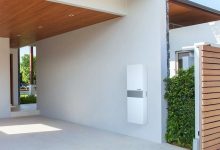As Australia’s electricity system transitions to variable renewable sources, the need for smart solutions such as demand response is increasing.
Household demand response provides options to increase or decrease an appliance’s power consumption. It can also be used to change the flow of any onsite electricity generation, for example using excess solar generation to charge an EV or battery, run a pool pump or heat hot water.
Demand response can therefore offer both network and environment benefits at the same time as lowering consumer electricity bills.
Despite the advantages, households are currently excluded from the National Electricity Market (NEM) wholesale demand response mechanism commencing on 24 October 2021.
Multiple trials have demonstrated the potential benefits for household participation in similar demand response programs.
Households have participated in the three year AEMO-ARENA demand response trials under the RERT (Reliability and Emergency Reserve Trader) scheme including being paid to reduce their energy use using smart thermostats in Victoria and South Australia.
In November 2019 Australian Energy Ministers decided four domestic appliances sold in the country must support demand response, including air conditioners (ACs), electric storage water heaters (resistive), pool pump controllers and electric vehicle (EV) charger/discharger units.
Despite appearances, this decision is a backward step for Australian consumers.
Rather than leaving the market free to offer a range of different demand response solutions, the Ministers decided to mandate that appliances must support a single unique interface prescribed in the AS4755 series of Australian Standards.
The Minsters’ timeline for compliance is aggressive, requiring AC and hot water manufacturers offer AS4755-equipped appliances by 1 July 2023, swimming pool pump controllers by 1 July 2024, and EV chargers/ dischargers by 1 July 2026.
IEEFA has identified five fundamental issues with the Energy Ministers’ decision to choose the interface described in the AS4755 series of standards:
- The interactions with other policies and approaches to peak demand and minimum system load are unclear
- AS4755 is a very basic, out-dated approach to demand response
- The AS4755 series does not support interoperability
- Open interoperable international solutions are already available
- The government’s original Decision Regulatory Impact Statement (D-RIS), including the cost-benefit analysis, was flawed.
Then there is the practical reality that despite AS4755 being available for over a decade, manufacturers of hot water heaters, pool pump controllers and EV chargers still don’t offer products supporting the standard.
These issues have serious implications for Australian consumers.
Modern sophisticated data-driven demand response programs typically use real-time validation of available demand response. This requires secure two-way communications with appliances.
AS4755 does not require appliances support validation. In fact, it does not even require two-way communications meaning AS4755 cannot even acknowledge receipt of commands or send back data that can be used to estimate demand response benefits.
As a result, the use of AS4755 demand response commands produces unpredictable and unverifiable results.
In sum, AS4755 does not support modern demand response programs.
International demand response solutions acknowledge households own their appliances and need to retain flexible control. These international solutions place consumers at the centre, ensuring they can override utility commands. AS4755 does not provide for consumer override.
Data-driven intelligent, responsive, and verifiable DR programs use independently certified common protocol supporting autonomous device registration and management. Again, AS4755 fails to define a common protocol and not support autonomous device registration or management.
For all of these reasons and more, IEEFA recommends the Energy Ministers rethink the mandating of a unique Australian appliance demand response standard.
Rather than mandating a single unique Australian standard, priority appliances should instead support ‘a demand response capability’.
This would leave product manufacturers, and the market, free to offer a range of different best practice international solutions.
Energy Ministers should ensure offered solutions allow consumers to retain control and the potential to over-ride commands when needed. In addition, appliances should be certified to be interoperable, and support verification and validation over secure two-way communications.
Alternatively, if the Energy Ministers genuinely want to mandate a single standard, they should consider adopting an already widely supported international solution.
High on this list should be IEEE 2030.5, especially given its successful use in Australia.
Unlike the Australian standard, products supporting alternative standards are already available supporting the aggressive timeline specified by Energy Ministers.
South Australia is planning to proceed with even earlier solo adoption of AS4755. Our recommendation is to cease pursuing a unique Australian Standard.
Other South Australian government policies and programs, including $11m of demand response trials, mean it has time to find a high quality approach to household appliance demand response. AS4755 is not that solution.
With world-leading levels of rooftop solar uptake, Australian households are at the forefront of the energy transition.
They deserve modern, international best practice demand response standards recognising their important role in the energy transition.









